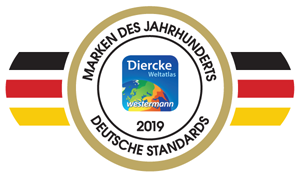Rome - Cultural metropolis through the centuries
Religious faiths
978-3-14-100890-6 | Page 41 | Ill. 3

Overview
Rome is located about 20 kilometres off the coast in a plain between the Mediterranean Sea and the foothills of the Apennines. According to tradition, the city, founded by Romulus in 753 BC, was built on several hills in the Tiber plain. The famous "seven hills" include the Palatine, Capitoline, Quirinal, Viminal, Esquiline, Celio, and Aventine. The Tiber separates Vatican City and Trastevere from the centre.
The urban development of Rome
When in 27 BC the Roman Empire under Augustus started to rise, Rome, with almost 1 million inhabitants, had long become the political and cultural centre of a world empire. In today's city centre, there are numerous architectural relics of this epoch, including the Colosseum, the Imperial Forums, the Roman Forum and the Baths of Caracalla. The Aurelian city wall (3rd century) marks the boundaries of today's functional centre of the city.
South of it, archaeological discoveries continue to be made on the excavation sites. At the end of 2007, a grotto with ornate gold and marble mosaics was found on the Palatine Hill at a depth of 16 metres, which presumably served as a "lupercale", a place of worship for the she-wolf who, according to legend, suckled Romulus and Remus. A few years earlier, the remains of three huts from the founding period in the 8th century BC had been excavated in the immediate vicinity.
Even though today's city centre is identical in location to the Roman one, there have been differences in the past. The structures of the medieval city, which had its centre in a different location, mediate between ancient and modern Rome. Rome remained confined to its medieval urban area, the Tiber Arc and Trastevere, until the second half of the 19th century. Its boundaries are indicated by the medieval city wall with its fortified bastions. The medieval city has a rather irregular street layout. Rome at this time was surrounded by the villas and parks of the Roman city nobility, which today form a green zone on the edge of the centre. Noble residences from this period include Villa Doria Pamphili, Villa Borghese and Villa Torlonia to the west and north. Because the areas outside the centre are relatively new, they have a comparatively regular street layout.
Vatican City
Vatican City, located outside the city centre since ancient times, is the centre of religious life. It has a long tradition as an independent state and, after belonging to Italy for a time, has been independent again since 1929. The head of state is the Pope, while the supreme body is the College of Cardinals consisting of about 200 members.
Pilgrimage tourism to St. Peter's Basilica and other places in the Vatican City contributes to the great tourist importance of Rome.
Capital of Italy
When Rome became the capital of the Kingdom of Italy, proclaimed ten years earlier, in 1871, a rapid population growth from 200,000 to more than 2.8 million people today began. The functional centre of Rome currently lies to the east outside the medieval city centre in the 19th century new housing estates, ending roughly at the Emperor Aurelian's city walls. Like the historical centre, this area still has residential functions. Today, hotels concentrate around the Termini railway station and the Villa Borghese. Other high-level tertiary facilities are scattered over wide areas of the city. Parts of the city functions, on the other hand, are located far outside the city centre in their own "centri direnzionali". Neither a governmental nor an administrative district has developed in the city, and the same can be said regarding the economy and cultural institutions.
For today's city, the ancient heritage is still significant, especially as an attraction for tourists from all over the world. However, a considerable part of the historic buildings is heavily polluted by noise and exhaust emissions. Furthermore, the governmental and administrative functions are of great economic importance. Around 250,000 inhabitants are employed by the Italian state, others work for the Vatican, the Food and Agriculture Organisation of the United Nations (FAO) or for companies that seek proximity to the state administration. Industry, on the other hand, is only of secondary importance.




